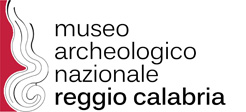Free admission at the MArRC for the Regional Day of the Museums of Calabria 2019
A weekend to spend at the National Archaeological Museum of Reggio Calabria is closing November month and opens December 2019. For two consecutive days, in fact, on Saturday, November 30 and Sunday, December 1st, entry will be free for all, for the second Regional Museum Day in Calabria, promoted by the Regional Department for Cultural Activities, and thanks to the promotion of MiBACT “Sunday at the Museum” for the first Sunday of the month.
A special occasion it comes for a full of charm trip to ancient Calabria, thanks to the main material evidence of life in the region since ancient times. “The Museum Day – the director of the MArRC, Carmelo Malacrino states – that has been established by the Calabria Region to enhance the cultural heritage of the territory consolidates the desire to ‘network’ among the Calabrian museum institutions, aware that, if united, they can always satisfy the cultural demands of the territory”.
On the morning of Saturday, November 30, starting from 9.30 am, in Piazza Paolo Orsi, the didactic and practical-experiential seminar for the “Art is Science” exhibition, promoted by AIAR – Italian Association of Archaeometry.
The initiative has educational and dissemination purposes, to present to the general public research on the study, restoration, conservation and enhancement of cultural heritage through scientific methodologies. Rosa Ponterio, CNR researcher and project coordinator in Calabria and Eastern Sicily, will curate the workshop “On the other side of the visible: comparing art and science”, dedicated to schools. Students from the Liceo Classico “Tommaso Campanella” will participate. “The museum hosts this national event for the fourth consecutive year. The research laboratory “moves” to the Museum to show how scientific methodologies and technical tools are helpful for the knowledge, protection and enhancement of cultural heritage”, Ponterio explains.

